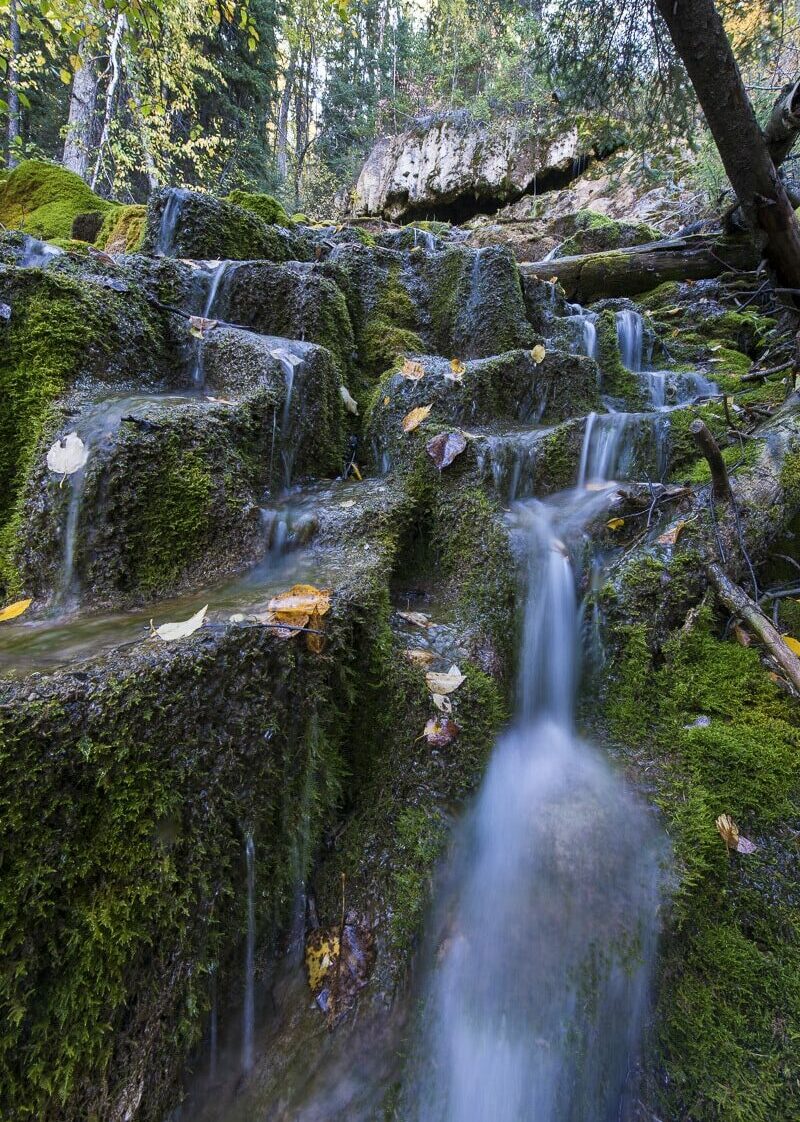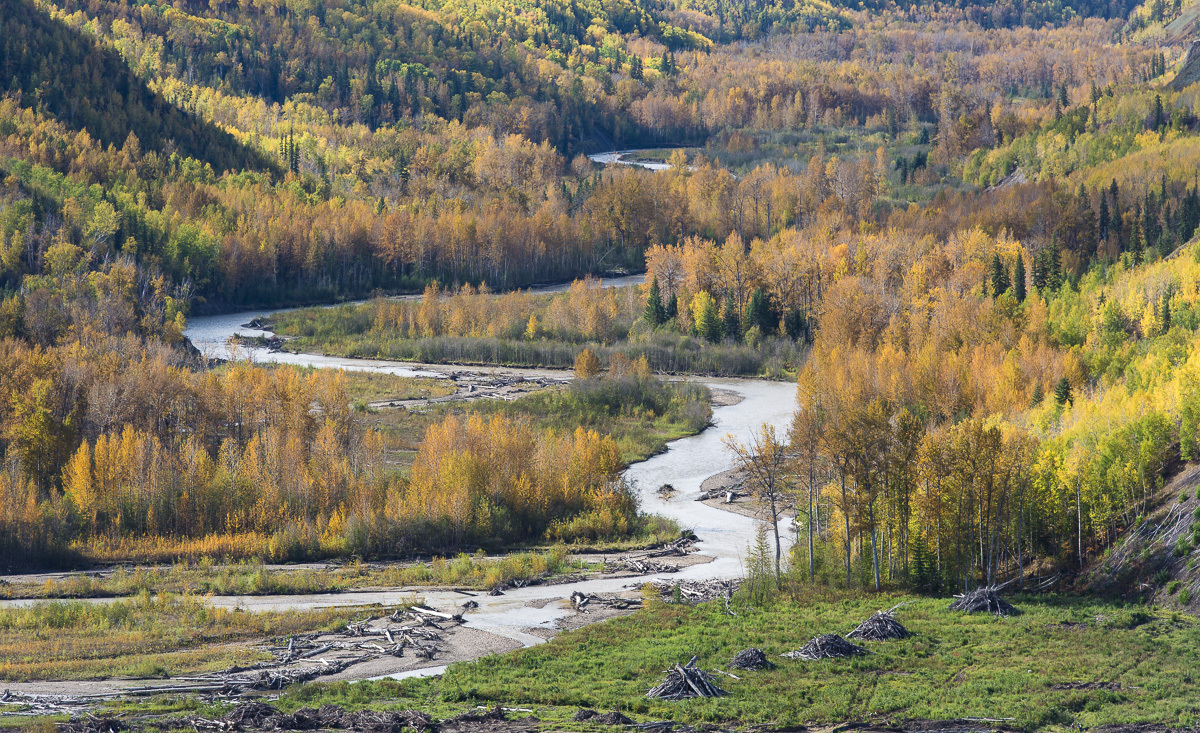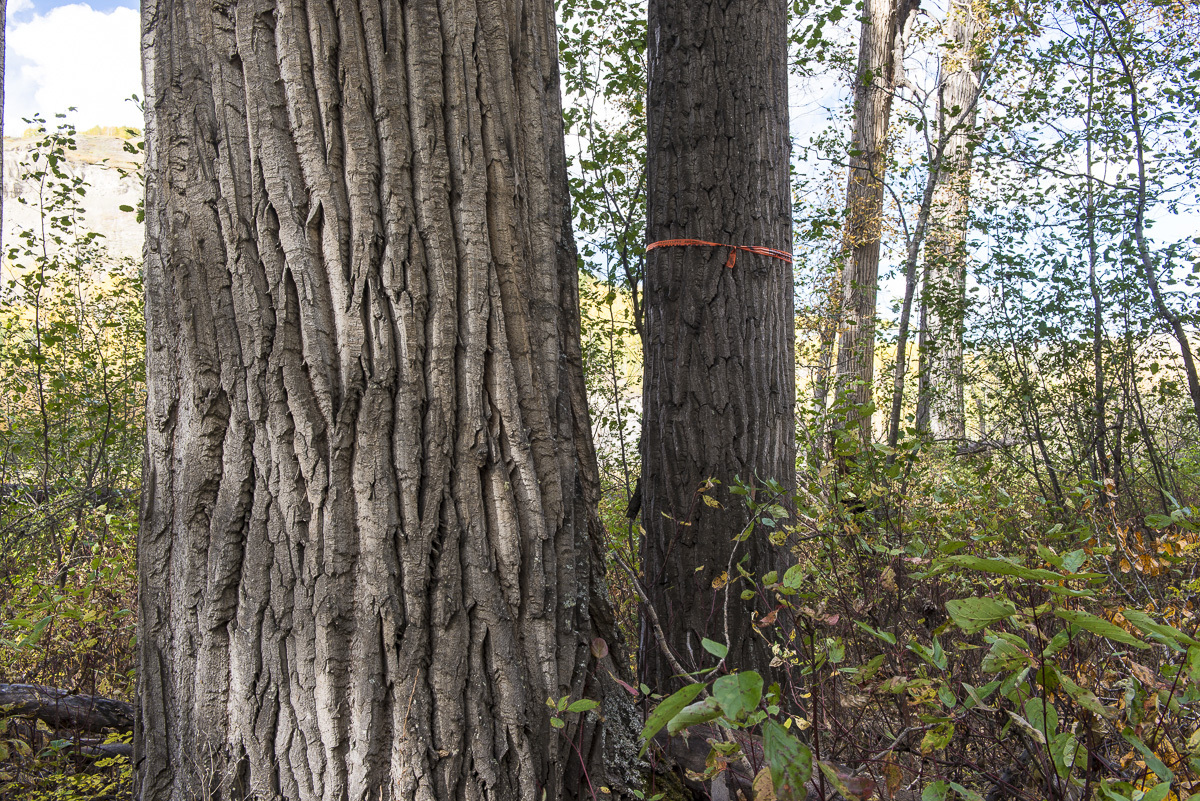
What’s scarier for Canadian communities — floods, or flood maps?
When maps showing areas most likely to flood are outdated, it puts people and property...
A Treaty 8 First Nation is going to court seeking the release of all documents related to significant geotechnical problems and safety risks at the troubled Site C dam under construction on B.C.’s Peace River.
West Moberly First Nations announced Monday it is seeking an order to obtain detailed information about geotechnical issues that require shoring up the dam structure, powerhouse and spillways, which are being built on a “weak foundation,” according to documents obtained by The Narwhal.
The nation is also asking the B.C. Supreme Court to order the release of the government-commissioned Peter Milburn report on the status of the over-budget project, as well as all documents shared with two international safety experts who are reviewing a surprise “fix” to the dam’s stability issues proposed by BC Hydro.
“Site C is a public infrastructure project,” said Roland Willson, chief of West Moberly First Nations, which has a pending Treaty Rights case against the dam. “And everything should be above board. We should see all the information about what’s going on. Nothing should be kept secret, especially when it has a possible effect on Treaty Rights.”
“They take their documents and then they go and hide behind closed doors and leak out little pieces of information that they deem fit to release. That’s not right.”
Tim Thielmann, legal counsel for West Moberly First Nations, said the nation is requesting a hearing take place within the next two weeks on urgent grounds and that the documents be released within seven days after the hearing.

Chief Roland Willson believes the public should have more access to information about the dam. “Nothing should be kept secret, especially when it has a possible effect on Treaty Rights,” he says. Photo: West Moberly First Nations

Clearing for the Site C dam has destroyed beautiful and rare hillside wetlands called tufa seeps in the Peace River Valley. The seeps likely took thousands of years to form, making them older than the Hanging Gardens of Babylon and the Great Wall of China. The largest tufa seeps had chambers the size of rooms. Photo: Garth Lenz / The Narwhal
BC Hydro classified the Site C dam’s overall health as “red” in December 2019, meaning the project is in serious trouble, yet construction has continued shrouded in secrecy, Thielmann pointed out.
“There’s absolutely no plans made public about what the solutions to these structural problems might be, what the costs of any of the solutions or options might be, what the schedule implications of any of those solutions or options might be, and whether any of them can be completed safely,” Thielmann said in an interview.
“And yet the project continues to chug along at $3 million a day, destroying the heartland of my clients, West Moberly First Nations, who live and rely on these lands for their way of life.”
Chief Willson said bulldozers are “ripping up the valley” even though there is no certainty that the Site C dam can ever be safely completed.
“They’ve destroyed unbelievable habitat,” he said. “The ecosystem that’s here was unique … We’ve lost old-growth forests in the valley, specific medicines that were in the valley, they’ve pretty much stripped the whole thing.”
“If people don’t live here, they don’t see what’s happening. The displacement of wildlife here is unbelievable.”
In an open letter to Premier John Horgan and his cabinet, released Monday, West Moberly First Nations warns it is also “actively considering” a return to court to seek a new injunction to stop work on the dam until cabinet makes a final determination about whether or not to proceed with the project, which the nation calls “unsafe, unnecessary and unlawful.”
The court denied the nation’s previous injunction application in October 2018 but said a new injunction could be granted if there were an “unforeseen and compelling change in circumstances” before a landmark Treaty Rights trial is scheduled to begin in March 2022.
West Moberly First Nations alleges that the Site C dam and two previous dams on the Peace River constitute an unjustifiable infringement of its Treaty Rights.
The Site C dam will flood 128 kilometres of the river and its tributaries, destroying important Indigenous cultural and spiritual sites and the last tract of the Peace River Valley available for traditional practices such as hunting, trapping and fishing, while also poisoning bull trout and other food fish with methylmercury.
Last July, when the B.C. government disclosed the geotechnical problems in a hasty press conference at the start of the mid-summer long weekend, Energy Minister Bruce Ralston announced the appointment of Milburn, a former B.C. deputy finance minister, to write an “independent report” on the project. Milburn submitted his report before the Christmas holidays, but the government has not released it.
In a surprise statement in January, Horgan said the government has appointed two international dam safety experts to assess a solution to the geotechnical problems proposed by BC Hydro and would release Milburn’s report once the experts had completed their work. He did not provide a timeline.
“The fix that’s been proposed by [BC] Hydro, we’re now asking for two other opinions on the efficacy of that fix,” Horgan told reporters. “That’s not to say that Milburn’s report isn’t comprehensive, but it is appropriate that we make sure that the fix that is being proposed to the geotechnical challenge is going to be safe.”

The area around the Moberly River, which provided habitat for at risk species such as the fisher, was a culturally and spiritually important place for Treaty 8 First Nations. The old-growth forest around the mouth of the Moberly River, which will be flooded by the Site C dam’s reservoir, was clear-cut by BC Hydro. Photo: Garth Lenz / The Narwhal
Former BC Hydro CEO Marc Eliesen said Milburn’s appointment was a “smokescreen” for continuing construction on the project — with no certainty the dam can ever be finished — while the government called a fall election one year ahead of schedule in the hope of securing a majority NDP government.
“They have no intention whatsoever of stopping,” Eliesen, who is also the former chair and CEO of Ontario Hydro and the Manitoba Energy Authority, said in an interview.
“This is part of the ongoing deception that both the government and BC Hydro have been practicing on the citizens of B.C.”
Eliesen said it was clear from the start that Milburn did not have the expertise to assess the Site C dam’s geotechnical issues — something Horgan confirmed at a media availability on Jan 14.
“What he [Milburn] could do, and probably what he has done, is put [together] a summary of what BC Hydro thinks the cost will be with the new fix and how it will impact the schedule … That’s something any consultant can do. But he didn’t have the background or the technical ability to assess anything related to the stability of the foundation.”
Eliesen said it’s telling that the government will not release the terms of reference for either the Milburn report or the report commissioned from the two independent dam safety experts, Norwegian Kaare Hoeg and John France, an independent consultant who used to work for California-based Aecom, a former BC Liberal Party donor. Aecom has received at least $674,000 in no-bid Site C dam contracts for providing an “independent construction advisor” and the services of its program manager Joe Ehasz, who sits on the Site C project’s technical advisory board.
In an affidavit, West Moberly First Nations demands the government release any terms of reference or supporting documents from the safety reports, any draft of the safety reports or communications that related to them, briefing notes and notes to cabinet and recommendations related to the safety reports.
The nation’s demand comes one week after residents of Old Fort, a riverside community near the dam construction site that has suffered two major landslides since 2018, launched a class action lawsuit against the B.C. government, local government and BC Hydro, saying it was foreseeable that Site C construction would cause or contribute to a landslide. The allegations have not been proven in court.
Eliesen said revelations last summer that water is seeping into huge amounts of concrete that have been poured on the Site C dam’s south bank, where the spillways and powerhouse will be located, are deeply disturbing.
“It’s the foundation for the spillway and for the structure for the turbines and generators. And you’re saying that it’s shaky? That the water has seeped in? That’s a calamity.”
Thielmann said the geotechnical issues constitute the “unforeseen and compelling change in circumstances” that would allow West Moberly First Nations to request an injunction to stop work on the project.
Horgan has mused publicly about cancelling the project on at least two occasions and the government stated in a press release that the geotechnical problems constitute a new challenge for the project, originally scheduled for completion in 2024, Thielmann pointed out.
“This is a fundamentally major re-think of the project itself,” he said. “We are hemorrhaging public funds and destroying sacred land on a project that may not be completed. I can’t think of a more substantial or compelling change in the status of the project.”
In a press release, West Moberly First Nations noted that BC Hydro is withholding its two latest quarterly Site C dam progress reports from the B.C. Utilities Commission. BC Hydro has also not answered the commission’s detailed questions about the project, which include querries about geotechnical issues and no-bid contracts.

Old-growth cottonwoods along Moberly River provided important habitat for species vulnerable to extinction, such as the fisher. The cottonwoods were logged to make way for a Site C dam waste rock dump. Photo: Garth Lenz / The Narwhal
An October investigation by The Narwhal revealed that senior officials in the B.C. government knew about the dam’s weak foundation in May 2019, more than one year before the information was shared with the public, the de facto owners of the dam.
In the open letter, Chief Willson urged Horgan to follow through with the government’s promise to implement the UN Declaration on the Rights of Indigenous Peoples and to uphold rights guaranteed by Treaty 8.
“You can reject the madness of ploughing ahead with this unnecessary, unsafe, and unlawful project,” the letter said.
“You can choose instead to immediately suspend the project. You can work with West Moberly and other Indigenous treaty partners to provide truly clean energy alternatives that meet the needs of all British Columbians. You can show Canada and the world that the only way to escape our colonial history of neglect and betrayal is to act boldly and honourably in the decisions that lie before us today.”
Prophet River First Nation also filed a civil action alleging that the Site C dam and two previous dams on the Peace River constituted an unjustifiable violation of Treaty Rights. The Nation withdrew its civil claim last year after reaching a settlement with the B.C. government and BC Hydro, saying the Site C project had been approved without its free, prior and informed consent and had “painfully impacted” Treaty 8 nations.
Other Treaty 8 members who were previously opposed to the dam have signed impact benefits and land transfer agreements with the B.C. government and BC Hydro that provide for lump sum and annual payments, along with contract work on the project.
A Joint Review Panel that examined the project for the B.C. and federal governments concluded the impacts of the dam on First Nations traditional land use would likely be adverse, significant and impossible to mitigate.
The B.C. government did not respond to a request for comment by publication time. The government does not normally comment on matters before the courts.
Enbridge Gas will face Waterloo Region in a hearing before the Ontario Energy Board to renew an agreement that would allow the company to continue...
Continue reading
When maps showing areas most likely to flood are outdated, it puts people and property...

We’re suing the RCMP for arresting a journalist on assignment for The Narwhal. It’s an...

As glaciers in Western Canada retreat at an alarming rate, guides on the frontlines are...